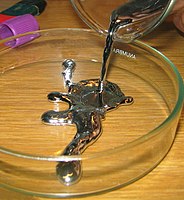
Photo from wikipedia
Compound dry-hot events enlarge homogenously due to teleconnected land-atmosphere feedbacks. Using over a century of ground-based observations over the contiguous United States, we show that the frequency of compound dry… Click to show full abstract
Compound dry-hot events enlarge homogenously due to teleconnected land-atmosphere feedbacks. Using over a century of ground-based observations over the contiguous United States, we show that the frequency of compound dry and hot extremes has increased substantially in the past decades, with an alarming increase in very rare dry-hot extremes. Our results indicate that the area affected by concurrent extremes has also increased significantly. Further, we explore homogeneity (i.e., connectedness) of dry-hot extremes across space. We show that dry-hot extremes have homogeneously enlarged over the past 122 years, pointing to spatial propagation of extreme dryness and heat and increased probability of continental-scale compound extremes. Last, we show an interesting shift between the main driver of dry-hot extremes over time. While meteorological drought was the main driver of dry-hot events in the 1930s, the observed warming trend has become the dominant driver in recent decades. Our results provide a deeper understanding of spatiotemporal variation of compound dry-hot extremes.
Journal Title: Science Advances
Year Published: 2020
Link to full text (if available)
Share on Social Media: Sign Up to like & get
recommendations!